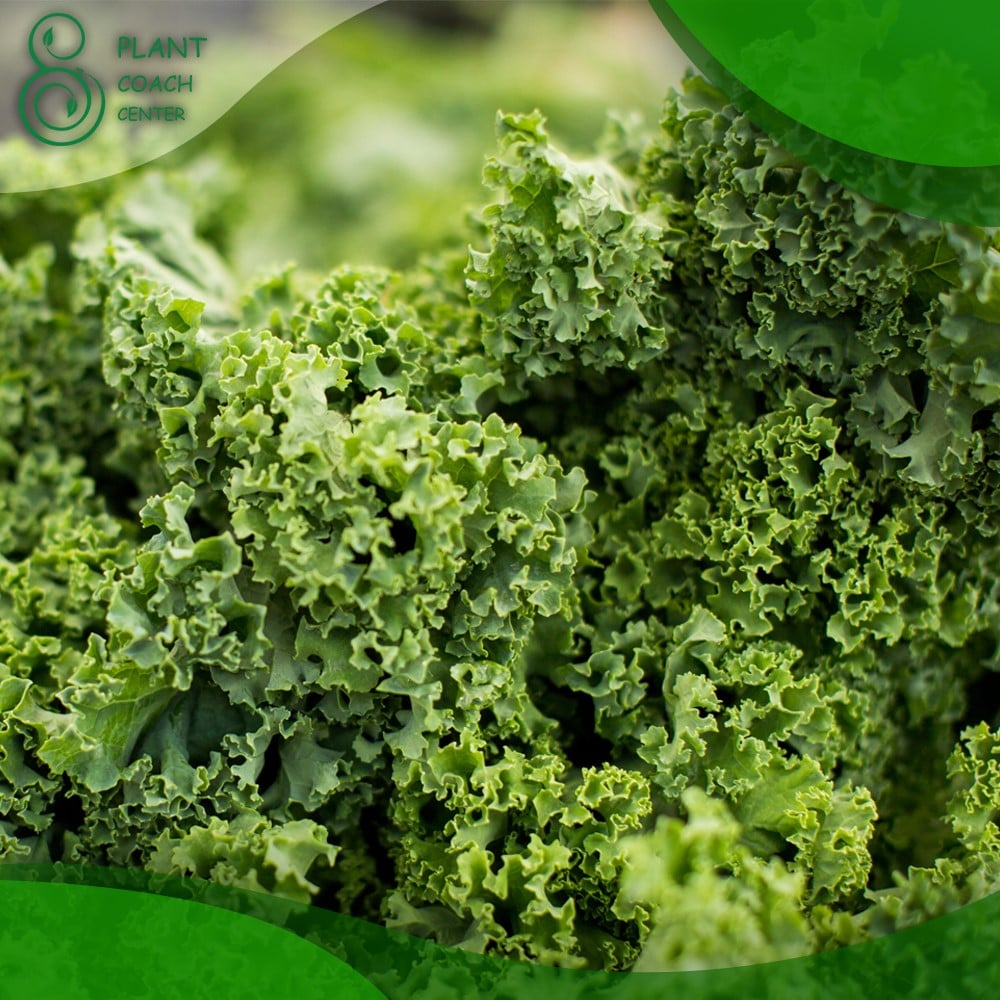When to Plant Collards
Introduction: Exploring the Best Time to Plant Collards
Welcome to our comprehensive guide on when to plant collards. In this article, we will delve into the optimal planting seasons for collard greens, providing valuable insights and troubleshooting tips along the way. Whether you’re a beginner or an experienced gardener, understanding the right time to plant collards is essential for a successful harvest.
Join us on this journey as we explore the nuances of collard planting and discover how plant coaching from PlantCoachCenter.com can help you achieve gardening excellence.
Understanding Collard Planting Seasons
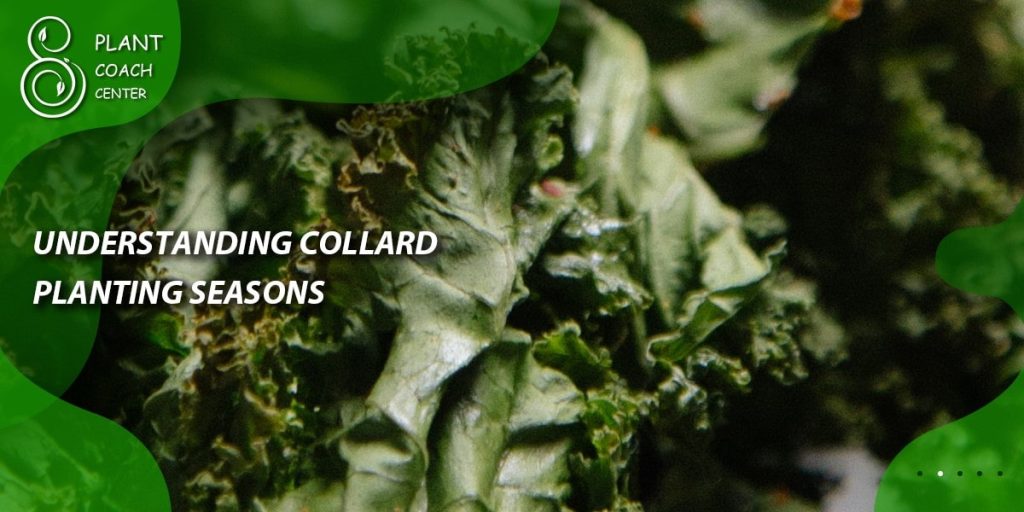
Collards (Brassica oleracea var. viridis) are cool-season vegetables that thrive in moderate temperatures. To ensure healthy growth and abundant yields, it’s important to consider the appropriate planting seasons. Let’s explore each season and its specific requirements for planting collards.
- Spring Planting
- Ideal Soil Temperature for Spring Planting
Collards prefer soil temperatures between 45°F and 75°F (7°C and 24°C) for optimal germination and growth. Wait until the soil has warmed up before planting in the spring.
- Preparing the Soil for Spring Planting
– Choose a well-draining location with full sun or partial shade.
– Loosen the soil and remove weeds and debris.
– Incorporate organic matter, such as compost, to improve soil fertility and structure.
- Starting Collard Seeds Indoors
– Start collard seeds indoors 4-6 weeks before the last frost date.
– Use seed trays or pots filled with seed-starting mix.
– Keep the soil consistently moist and provide sufficient light for healthy seedling development.
- Direct Sowing in the Spring Garden
– Once the soil has reached the appropriate temperature, sow collard seeds directly into the garden bed.
– Space the seeds according to the package instructions, typically 12-18 inches apart.
– Cover the seeds lightly with soil and water gently.
- Care Guidelines for Spring-Planted Collards
– Water regularly to keep the soil evenly moist.
– Mulch around the plants to conserve moisture and suppress weed growth.
– Monitor for pests and diseases, applying appropriate organic controls as needed.
- Summer Planting
- Optimal Timing for Summer Planting
– In areas with mild summers, you can plant collards in early to mid-summer.
– Choose a location with partial shade to protect the plants from intense heat.
- Preparing the Garden for Summer Planting
– Prepare the soil as described earlier, ensuring good drainage.
– Amend the soil with organic matter to enhance moisture retention.
- Transplanting Collard Seedlings in the Summer
– Start collard seeds indoors 6-8 weeks before the intended planting date.
– Harden off the seedlings gradually to acclimate them to outdoor conditions.
– Transplant the seedlings into the garden, spacing them 12-18 inches apart.
- Summer Care Considerations for Collards
– Provide consistent moisture to combat summer heat stress.
– Use shade cloth or provide shade during the hottest part of the day.
– Monitor for pests like aphids and caterpillars, and take appropriate action.
- Dealing with Common Summer Pests and Diseases
– Aphids: Control aphid infestations by washing the plants with a strong stream of water or using organic insecticidal soap.
– Cabbage worms: Handpick caterpillars or use organic Bacillus thuringiensis (Bt) spray.
– Downy mildew and other diseases: Remove affected leaves and ensure good air circulation.
- Fall Planting
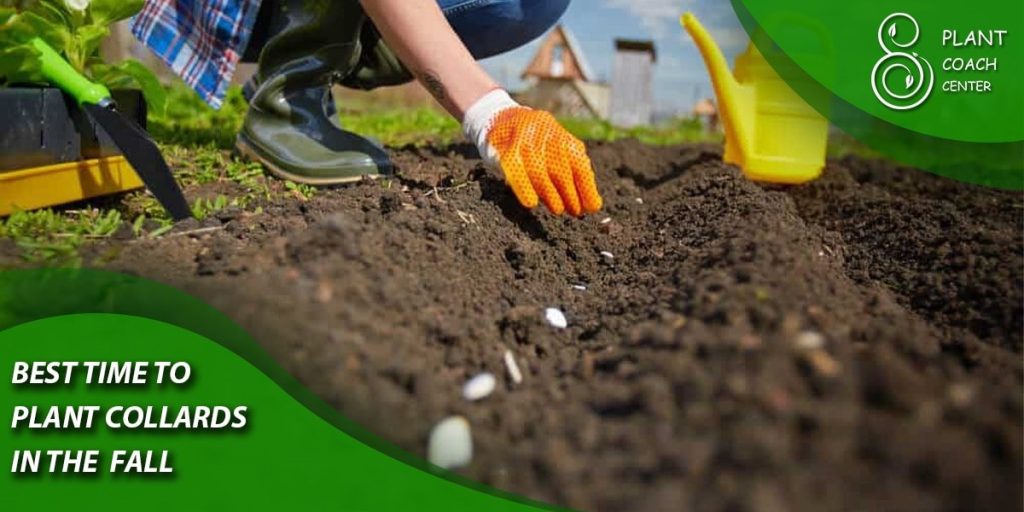
- Best Time to Plant Collards in the Fall
– Fall planting offers the advantage of cooler temperatures that collards thrive in.
– Plant collards 6-8 weeks before the first expected frost.
– Consult your local extension service or almanac for the average frost dates in your area.
- Preparing the Soil and Garden for Fall Planting
– Clear the garden bed of debris and weeds.
– Amend the soil with compost or well-rotted manure to improve fertility.
- Transplanting Collards in the Fall
– Start collard seeds indoors 8-10 weeks before the intended planting date.
– Transplant the seedlings into the garden, spacing them 12-18 inches apart.
– Water thoroughly after transplanting to ensure good root establishment.
- Fall Care Tips for Healthy Collard Plants
– Monitor soil moisture and provide consistent watering when necessary.
– Apply a layer of mulch to conserve moisture and regulate soil temperature.
– Protect the plants from frost by covering them with row covers or frost blankets.
- Protecting Collards from Frost and Cold Weather
– Extend the harvest season by using frost protection measures.
– Cover the plants with row covers or cloths during frosty nights.
– Harvest the outer leaves to promote continued growth and prolong the harvest.
In II. Factors Influencing Planting Time
Successful collard planting goes beyond considering the seasons. Several factors influence the ideal planting time for your region. Understanding these factors will help you make informed decisions when it comes to planting collards.
- Understanding Growing Zones and Frost Dates
– Determine your USDA hardiness zone to identify the appropriate planting time.
– Consult the frost dates specific to your region to plan your collard planting accordingly.
– Take note of the average first and last frost dates, as well as the length of the growing season.
- Climate Considerations for Collard Planting
– Collards prefer a temperate climate with moderate temperatures.
– Consider the average temperature ranges during the planting seasons to ensure optimal growth.
– Take into account the rainfall patterns and humidity levels as well.
- Local Weather Patterns and Microclimates
– Study the microclimates within your garden or growing area.
– Observe any variations in temperature, sunlight exposure, or wind patterns.
– Adjust your planting time or location within your garden based on these microclimates.
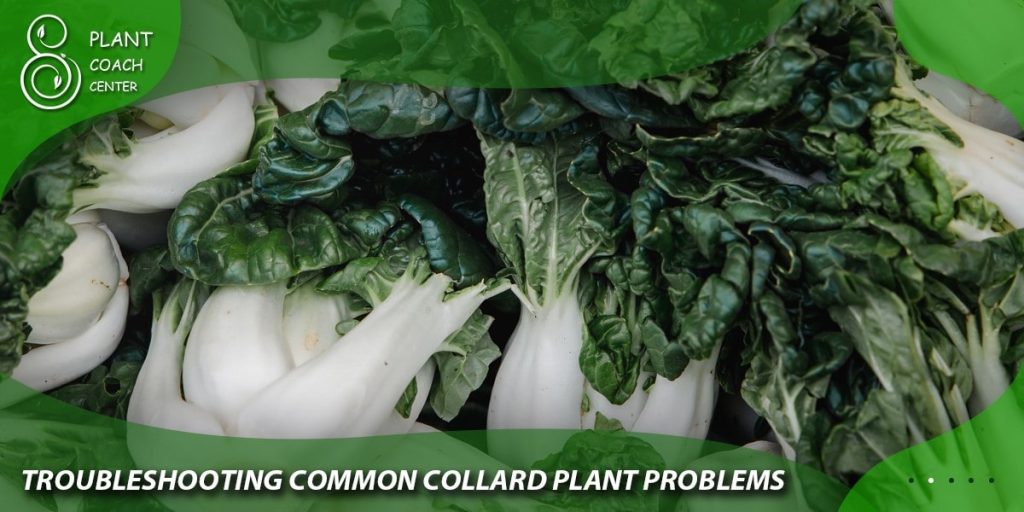
Troubleshooting Common Collard Plant Problems
While collards are generally resilient, they can encounter various problems during their growth. Here are some common issues and troubleshooting tips to help you overcome them.
- Pests and Diseases
- Identifying and Managing Collard Pests
– Common pests include aphids, cabbage worms, flea beetles, and slugs.
– Regularly inspect your plants for signs of pest infestation.
– Use organic pest control methods such as insecticidal soap, neem oil, or companion planting with pest-repellent plants.
- Common Diseases Affecting Collard Plants
– Downy mildew, powdery mildew, clubroot, and black rot are common diseases.
– Practice crop rotation to minimize disease buildup in the soil.
– Remove and destroy infected plants and provide adequate air circulation.
- Organic Pest and Disease Control Methods
– Encourage beneficial insects like ladybugs and lacewings to control pests.
– Use natural fungicides or homemade remedies like baking soda sprays to combat fungal diseases.
– Maintain proper plant spacing and avoid overwatering to prevent disease development.
- Nutritional Deficiencies and Imbalances
- Recognizing Nutrient Deficiencies in Collards
– Common nutrient deficiencies include nitrogen, phosphorus, potassium, and iron.
– Observe the symptoms such as yellowing leaves, stunted growth, or poor fruiting.
– Conduct a soil test to identify specific nutrient deficiencies accurately.
- Soil Testing and Correcting Nutrient Imbalances
– Test your soil to determine its pH level and nutrient content.
– Amend the soil based on the soil test results using organic fertilizers or soil amendments.
– Follow the recommended application rates and timing for specific nutrients.
- Fertilization Techniques for Healthy Collard Growth
– Use slow-release organic fertilizers or compost to provide a steady supply of nutrients.
– Apply fertilizer according to the collards’ growth stages and the specific nutrient requirements.
– Avoid over-fertilization, as it can lead to imbalances or nutrient toxicity.
- Environmental Stress Factors
- Watering Issues and Proper Irrigation Techniques
– Monitor soil moisture levels and water consistently to prevent drought stress.
– Water deeply and infrequently to encourage deep root growth.
– Avoid overhead watering to minimize foliar diseases and water waste.
- Dealing with Heat Stress and Sunburn
– Provide shade during the hottest part of the day to protect collards from excessive heat.
– Mulch around the plants to regulate soil temperature and conserve moisture.
– Consider using shade cloth or row covers to mitigate heat stress.
- Managing Cold and Frost Damage
– Shield collards from frost by covering them with row covers or frost blankets.
– Water the soil before a freeze to help insulate the roots.
– Harvest mature leaves before frost to salvage the crop.
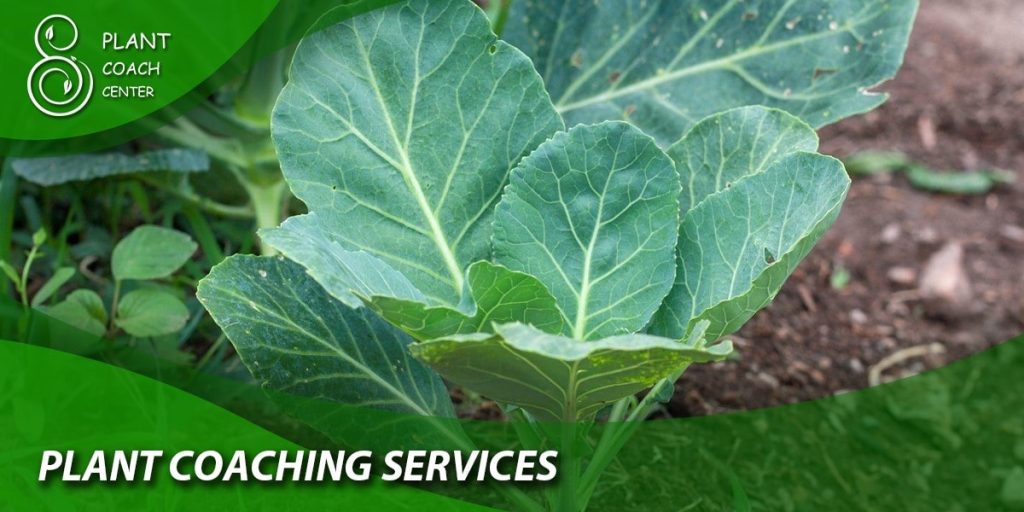
Seeking Expert Guidance from PlantCoachCenter.com
Gardening can be a rewarding but challenging endeavor, especially when it comes to determining the best time to plant collards. If you find yourself in need of personalized guidance or have specific questions about collard planting, turn to PlantCoachCenter.com for expert advice and support.
- Plant Coaching Services
PlantCoachCenter.com offers a range of plant coaching services to assist you in every step of your gardening journey. Their team of experienced plant coaches can provide tailored guidance on collard planting, including:
– Determining the optimal planting time based on your location and climate.
– Offering troubleshooting tips for common collard plant problems.
– Providing advice on soil preparation, fertilization, and pest control.
– Assisting with personalized garden planning and plant selection.
- Online Resources and Community
In addition to one-on-one plant coaching, PlantCoachCenter.com hosts a wealth of online resources and a vibrant gardening community. Explore their website to access:
– Comprehensive articles, guides, and tutorials on various gardening topics.
– Forums and discussion boards to connect with fellow gardeners and share experiences.
– Tips and tricks from experienced growers to enhance your collard planting success.
– Regular updates on seasonal planting recommendations and gardening trends.
- Workshops and Webinars
PlantCoachCenter.com organizes workshops and webinars led by industry experts to further your gardening knowledge. These interactive sessions cover a wide range of topics, including collard planting techniques, pest management strategies, and soil health improvement. Participating in these educational events can deepen your understanding of collard cultivation and equip you with valuable skills.
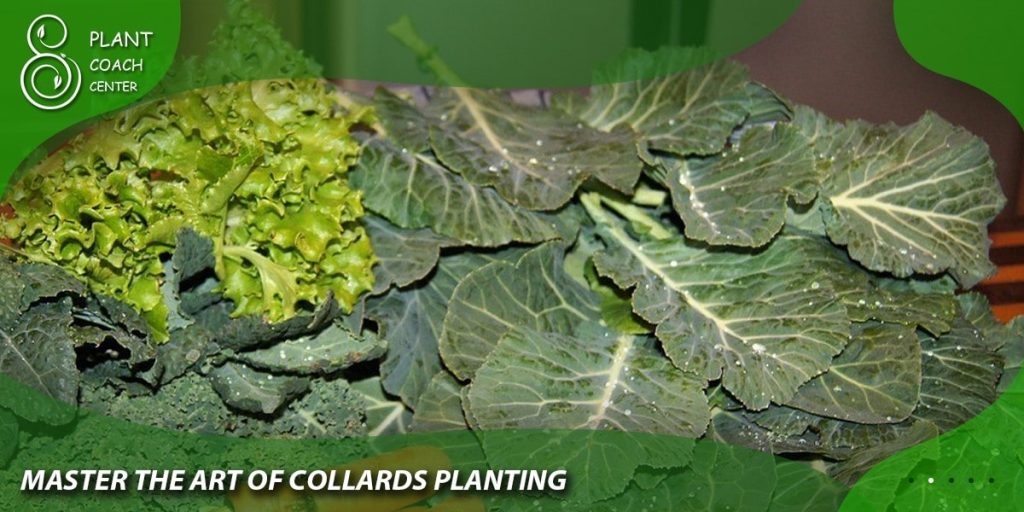
Conclusion: Mastering the Art of Collard Planting
In conclusion, understanding the best time to plant collards is crucial for a successful and bountiful harvest. By considering the planting seasons, local climate factors, and effective troubleshooting techniques, you can optimize your collard growing experience. Remember to leverage the expertise and resources available at PlantCoachCenter.com to enhance your gardening skills and achieve exceptional results.
Embark on your collard planting journey with confidence, armed with the knowledge and support necessary to excel in the world of gardening. Enjoy the process of nurturing your collard plants from seed to harvest, and savor the flavors of these nutritious greens in your favorite recipes. Happy gardening!
When should I plant collards?
Spring or fall.
Can I plant collards in summer?
Yes, but they prefer cooler temperatures.
What is the best time to sow collard seeds?
Late summer to early fall or early spring.
Can I grow collards indoors?
Yes, you can start them indoors and transplant them outside later.


